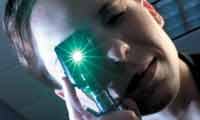Article
Educational campaign targets ophthalmologists
The three steps in the educational campaign are vision wear, based on intelligent vision correction; vision care, emphasizing maintenance and preventive eye care; and practitioner and patient education.

"When you prescribe eyeglasses, if you are truly prescribing you should go beyond the standard refraction and take into account more than the numbers," said Susan Stenson, MD, FACS, clinical professor of ophthalmology, New York University School of Medicine, New York.
"You must try to evaluate the patient's eyes comprehensively, considering both ocular and general health issues, individual risk factors, specific visual needs, and preventive measures, and then use all of these data to generate a true prescription that provides more than just 20/20 on a Snellen chart (or the best quantitative vision the patient can achieve) in an effort to encourage both good quality of vision and long-term ocular health by decreasing the risk for such vision-threatening diseases as cataract and age-related macular degeneration (AMD)," she said.
Healthy Sight Counseling is a culmination of clinical research and industry educational initiatives that have taken place in recent years. The campaign is being directed at both ophthalmologic and optometric audiences and will also include patient education.
"The goal of Healthy Sight is a lifetime of good sight, and it is the eye-care practitioner's task to educate patients on how to achieve the best possible quantity and quality of vision, to prescribe spectacles intelligently to meet that goal, and to advocate preventive eye care to help protect and preserve eye health and promote long-term ocular well-being," Dr. Stenson said. "Unfortunately, to many busy practitioners, prescribing eyeglasses is not as much of a priority as treating eye disease.
"But if we can re-educate ophthalmologists to convince them that intelligently prescribing eyeglasses can maintain and preserve vision in the future so that it becomes a form of preventive medicine, and that very often patients' main indicator of satisfaction with the level of eye care rendered is based on how well they see with the glasses prescribed, I think that we can have a better vision-corrected population of patients who are happier with the doctors who are doing the prescribing and taking care of their eyes," Dr. Stenson added.
"Perhaps re-educating is not the best term," she continued.
"It may be more a matter of reminding the ophthalmologist of what is now possible with modern spectacles, where more than vision correction can be achieved, using current spectacle lenses and lens treatment to provide visual quality, visual convenience, and visual comfort, along with ocular protection," she said.
Three-step program
The three steps in the educational campaign are:
Intelligent vision correction includes both correction of the refractive error and "lifestyle prescribing," which takes into account the wearer's personal, occupational, social, and recreational vision needs, as well as any relevant ophthalmic or medical conditions.
Other considerations should include ocular health-stressing the importance of ocular protection against ultraviolet radiation (UVR) and impact-related injuries, according to Dr. Stenson.
Newsletter
Don’t miss out—get Ophthalmology Times updates on the latest clinical advancements and expert interviews, straight to your inbox.




